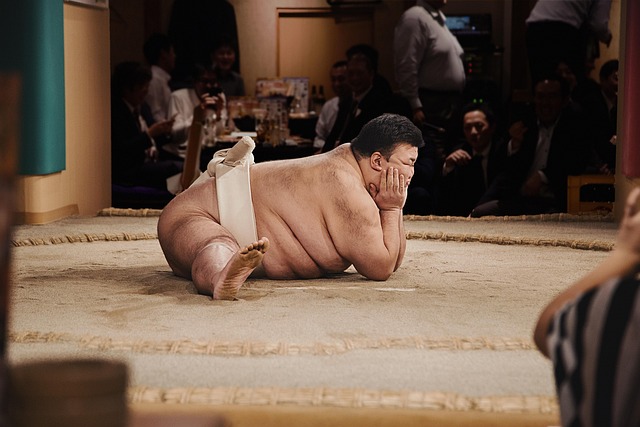Non-surgical fat reduction techniques like cryolipolysis (fat freezing) and liposuction offer safe alternatives to invasive procedures, each with unique advantages. Fat freezing is non-invasive but requires multiple sessions, while liposuction provides quicker, longer-lasting results with a more complex procedure. Key differences lie in outcome duration: liposuction permanently removes fat cells, whereas fat freezing causes temporary cell death, regrowable over time. Consulting healthcare professionals helps determine the best method based on individual needs, safety considerations, and desired outcomes for an effective non-surgical fat reduction comparison.
“Uncover the battle between two popular body contouring methods: liposuction and fat freezing. This comprehensive guide compares these non-surgical fat reduction techniques, offering insights into their mechanisms, effectiveness, and suitability for diverse bodies.
From understanding the science behind each process to exploring visual vs. scientific measurements of success, we delve into what makes these procedures tick. We also examine individual considerations, safety aspects, and long-term results maintenance, providing a definitive comparison for informed decision-making.”
Understanding Non-Surgical Fat Reduction Techniques

Non-surgical fat reduction techniques have gained significant popularity as alternatives to invasive procedures like liposuction. These methods offer a safer and more accessible approach to achieving a slimmer figure, with minimal downtime or recovery. The two most prominent non-surgical options are fat freezing and liposuction, each with its own unique benefits and considerations.
Fat freezing, also known as cryolipolysis, works by targeting and freezing fat cells in specific areas. This process prompts the body to naturally eliminate the frozen cells over time, resulting in reduced fat content. On the other hand, liposuction physically sucks out fat from targeted areas using a suction device. Both methods have their pros and cons; for instance, fat freezing is non-invasive but may require multiple sessions, while liposuction offers quicker results with longer-lasting outcomes, albeit with a more complex procedure. A thorough understanding of these techniques allows individuals to make informed decisions tailored to their preferences and desired outcomes.
How Liposuction Works: A Step-by-Step Guide

Liposuction is a popular non-surgical fat reduction procedure that involves the removal of fat cells from specific areas of the body. Here’s a step-by-step guide to understanding how it works:
1. Anesthesia: The process begins with local anesthetics being administered to numb the treatment area, ensuring patient comfort. This is typically done using a numbing cream or injections.
2. Vacuum Application: A small cannula, a thin tube with a suction device at the end, is inserted into the targeted fat deposit through tiny incisions. The doctor guides the cannula beneath the skin, carefully avoiding vital structures like nerves and blood vessels.
3. Suction and Fat Extraction: Once positioned correctly, the suction device is activated, creating a gentle vacuum within the treatment area. This vacuum pulls the tissue upward while gently breaking up fat cells in that region. As the procedure progresses, the cannula suctions out the broken-down fat cells through the small incisions.
4. Incision Closure: After the desired amount of fat has been removed, the cannula is carefully withdrawn, and the incisions are closed with minimal scarring. The body naturally absorbs these extracted fat cells, leaving behind a smoother, slimmer appearance.
Exploring Fat Freezing: Process and Effectiveness

Fat freezing, also known as cryolipolysis, is a non-surgical fat reduction procedure that has gained popularity in recent years. During this treatment, targeted areas are cooled to precise temperatures, causing fat cells to crystallize and eventually die off. This process is often referred to as a “gossamer” approach to body contouring, as it doesn’t involve incisions or implants. The treated fat cells are then naturally eliminated from the body by the lymphatic system over several weeks, leading to a slimmer appearance.
While fat freezing has shown promising results for many individuals, it’s important to note its effectiveness can vary based on factors like skin thickness and the amount of fat present in the treatment area. Unlike liposuction, which physically removes fat cells, fat freezing is more selective, targeting specific areas for fat reduction. As such, it might be better suited for people with smaller pockets of stubborn fat rather than significant overall weight loss. A comprehensive consultation with a qualified healthcare provider can help determine if fat freezing or other procedures are the best non-surgical fat reduction options.
Comparing Results: Visual vs. Scientific Measurements

When comparing liposuction and fat freezing for non-surgical fat reduction, it’s essential to consider both visual and scientific measurements. Visually, both procedures can lead to significant improvements in body contouring. Liposuction offers more precise and targeted removal of fat cells, resulting in immediate and dramatic results, particularly in specific problem areas like the abdomen, thighs, and arms. Fat freezing, on the other hand, promotes natural fat cell reduction over a few months, with gradual results that can be difficult to predict precisely from the outset.
Scientifically, each method has its metrics. Liposuction permanently removes fat cells through suction, providing long-lasting outcomes. Fat freezing, however, stimulates the body’s own fat-breaking processes by cooling adipose tissue. This non-invasive approach requires patience as it relies on the body’s natural metabolism to process and eliminate fat cells over time, typically 4-6 months post-treatment. Comparing results thus involves understanding that liposuction offers instant, permanent changes, while fat freezing provides a gradual transformation with varying outcomes based on individual metabolic responses.
Considerations for Individual Suitability and Safety

When considering non-surgical fat reduction options, it’s crucial to understand individual suitability and safety factors. Both liposuction and fat freezing have their unique advantages and contraindications. Liposuction is a surgical procedure that physically removes fat cells from targeted areas, making it effective for those with localized fat deposits who are generally healthy and within a reasonable weight range. On the other hand, fat freezing (cryolipolysis) is a non-invasive method that freezes and eliminates fat cells over time, suitable for individuals seeking body contouring without incisions.
Safety considerations play a vital role in choosing between these methods. Liposuction may carry risks associated with anesthesia and surgery, including infection, bleeding, and potential damage to nerves or tissues. Fat freezing, while generally safer, might cause temporary discomfort, bruising, or skin sensitivity at the treated areas. It’s essential for individuals to consult with medical professionals who can assess their specific needs, health history, and goals to determine which method is best suited for their non-surgical fat reduction journey.
Longevity of Results: Maintenance and Follow-up Care

When comparing liposuction and fat freezing as non-surgical fat reduction methods, understanding the longevity of results is key. Liposuction offers more permanent results because it physically removes fat cells from the body. This means once the treatment is complete, the fat won’t regrow in the treated areas. On the other hand, fat freezing temporarily reduces fat cells by freezing them. While some fat cells do die after freezing, circulation and movement can help distribute remaining fat cells throughout the body, leading to potential regrowth in certain areas over time.
Maintenance and follow-up care play a significant role in extending the results of both procedures. For liposuction, minimal maintenance is typically required, focusing on healthy lifestyle choices like diet and exercise to maintain the new contour. Fat freezing patients may need more active follow-up care, including regular check-ins with their provider to assess progress and address any concerns regarding fat cell regrowth or uneven results.
